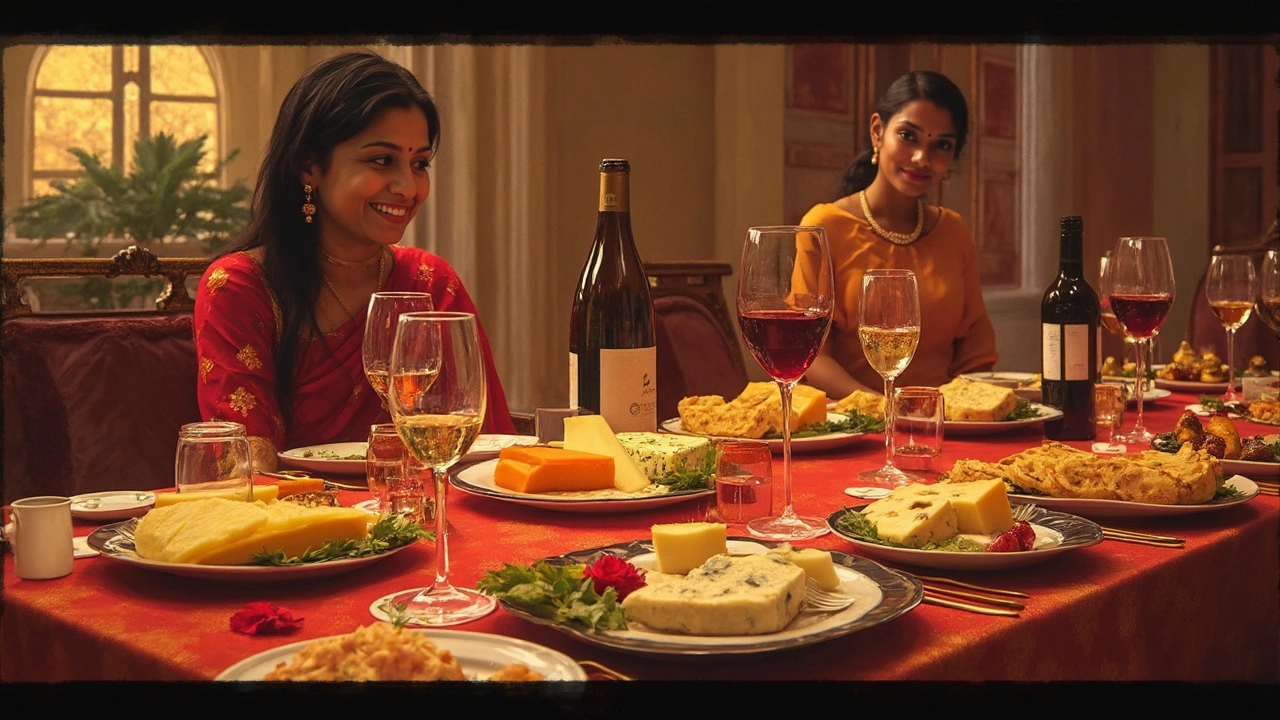
Ever found yourself at a cheese board, glass of wine in hand, wondering which goes best with which? You're not alone. Pairing wine with cheese can feel a bit like playing matchmaker at times. It's all about finding that perfect balance where both the wine and the cheese shine without one overshadowing the other.
The first thing to wrap your head around is that not all wines and cheeses are made equal. Some combinations can sing, while others might just fall flat. For instance, a tangy goat cheese loves the crispness of a Sauvignon Blanc like they were made for each other. Meanwhile, a creamy Brie latches beautifully onto the buttery notes in a Chardonnay.
It's also worth keeping in mind the strength and intensity. Sharp cheddar and Cabernet Sauvignon team up well because they both pack a flavor punch. They can handle each other's boldness, creating a kind of harmony that just works.
- Why Pairing Matters
- Classic Pairings You Should Know
- Matching by Cheese Type
- Playing with Regional Combinations
- Tips for Experimenting
Why Pairing Matters
Ever wondered why some wine and cheese combinations taste heavenly while others are just meh? Pairing matters because it's all about balance and harmony. When you get it right, both the wine and the cheese come alive, accentuating their best flavors.
Think of an orchestral concert – each instrument plays its part, but together, they create a symphony. That’s exactly what a perfect wine and cheese pairing achieves. According to renowned sommelier, Jane Lopes, “Pairing wine and cheese is about elevating both elements to create a third, delightful experience.”
"The real magic of pairing happens when the flavors transform each other, bringing out nuances you wouldn't notice alone." – Jane Lopes
So, why does it work like this? Well, it's all about complementing or contrasting the flavors and textures. A creamy cheese can tone down the tannins in a red wine, making it smoother. Alternatively, a sweet wine can beautifully offset a salty cheese like Roquefort, turning your tasting experience into something memorable.
- Complementary Pairing: Matching similar flavor profiles, like a buttery Chardonnay with a soft creamy Brie.
- Contrasting Pairing: Bringing opposing flavors together, like a sharp blue cheese with a sweet port.
Moreover, there's more to it than just taste. The texture, fat content, and acidity in the cheese can change how a wine feels in your mouth. This goes both ways! A red wine with prominent tannins might feel softer when paired with a high-fat cheese.
Here's a little table to illustrate:
| Wine | Cheese | Flavor Interaction |
|---|---|---|
| Sauvignon Blanc | Goat Cheese | Crisp meets tart |
| Port | Stilton | Sweet balances salty |
Understand these basics, and you'll start to see why a good wine and cheese pairing is so much more than just throwing any wine and cheese together. It's art on a plate, or rather, a deliciously interactive experience waiting to be explored.
Classic Pairings You Should Know
If you're looking to dip your toes into the world of wine and cheese pairings, starting with a few classics can set you on the right path. These tried-and-true combos have been delighting palates for ages, and they are sure to impress at your next gathering.
First up is the well-loved pairing of Brie and Chardonnay. This combo works because the creamy texture of Brie wraps around the rich, buttery notes of a Chardonnay, creating a luscious experience. Plus, the slight acidity in the wine cuts through the creaminess, keeping the flavors fresh.
If you're a fan of goat cheese, try it with a glass of Sauvignon Blanc. The zingy and earthy flavor of goat cheese pairs beautifully with the crisp, citrusy notes of this wine, creating a refreshing match that's perfect for summer days.
How about a bite of sharp cheddar? It buddies up nicely with a robust Cabernet Sauvignon. Both are bold, with the wine's tannins balancing the cheese's sharpness, creating a complex yet satisfying taste.
Blue cheese lovers out there? You can't go wrong with a sweet Port. The salty and crumbly texture of blue cheese paired with the rich sweetness of Port creates a stunning contrast that delights many taste buds.
For those who love a nutty Gruyère, try pairing it with a light Pinot Noir. The mild fruitiness and earthy undertones of the wine complement the cheese perfectly, elevating both without overshadowing.
These pairings are like the greatest hits in the world of wine and cheese. They’ve stood the test of time, proving that sometimes the classics are classics for a reason. So, why not try a few and experience the magic yourself?
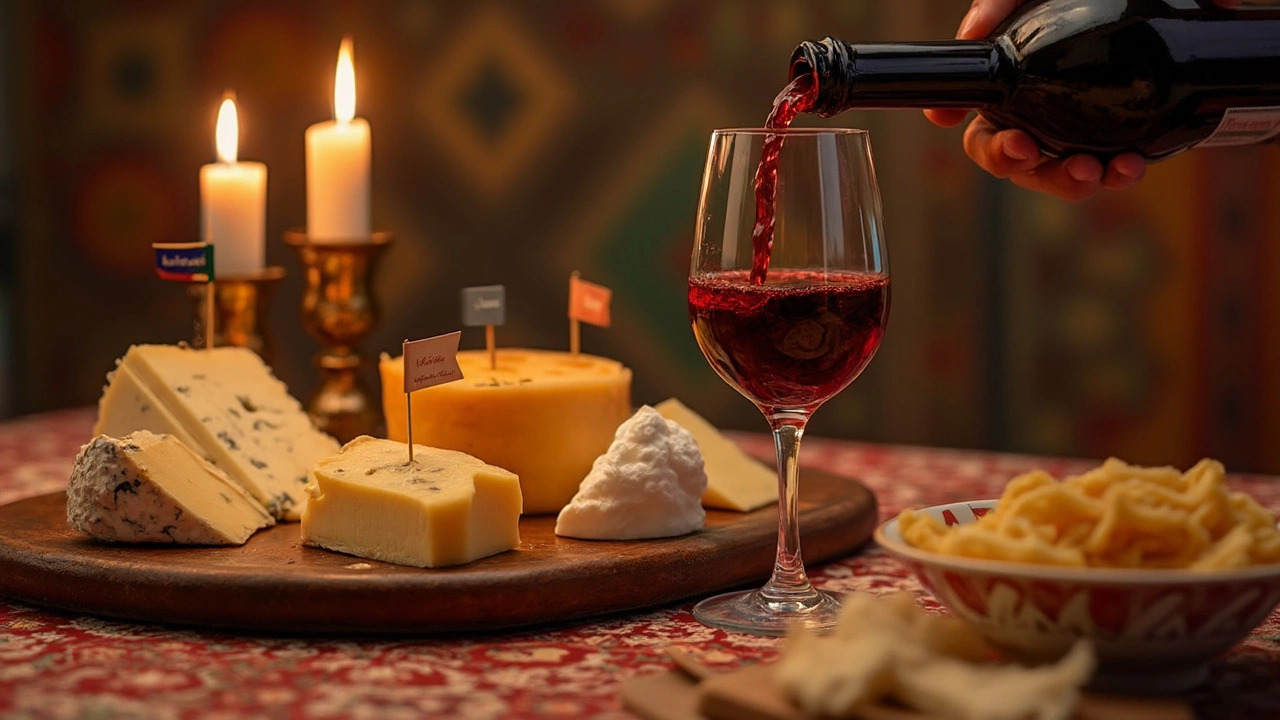
Matching by Cheese Type
Alright, let's get into the nitty-gritty of pairing wine and cheese by breaking it down by cheese types. This way, you'll have a guide to tackle everything from soft and delicate to hard and robust cheeses.
Fresh Cheeses: Think about options like goat cheese, feta, or mozzarella. These cheeses are typically bright and tangy. They love hanging out with crisp, acidic wines like Sauvignon Blanc or a young Chardonnay. If you're feeling adventurous, a sparkling wine can also add a refreshing twist.
Soft Cheeses: Brie and Camembert belong here. Their creamy textures and bloomy rinds pair beautifully with a richer, buttery Chardonnay. If you're a red wine enthusiast, a light-bodied Pinot Noir is a safe bet, balancing the cheese's richness without overpowering it.
Semi-Soft to Semi-Hard Cheeses: Cheeses like Gouda and Havarti are in the middle ground. They’re versatile and can go with both reds and whites depending on their age. A zesty Zinfandel or a fruity Riesling are solid choices. Remember, young Goudas pair differently than the aged ones, which can handle more robust reds like Cabernet Sauvignon.
Hard Cheeses: For cheddar, Asiago, or Parmigiano Reggiano, go for reds that have a bit more heft, like a Merlot or a Cabernet Sauvignon. These wines match the cheese's strength and bring out its flavor. White wine lovers can try an oaked Chardonnay for a different experience.
Blue Cheeses: Strong and bold blues like Roquefort or Gorgonzola have a bit of a bite, so they pair well with sweet wines that can hold their ground, like Port or Sauternes. The sweetness balances the saltiness of the cheese for a perfect bite.
| Cheese Type | Wine Recommendation |
|---|---|
| Goat Cheese | Sauvignon Blanc |
| Brie | Chardonnay |
| Gouda | Zinfandel |
| Cheddar | Merlot |
| Blue Cheese | Port |
With these pairing basics under your belt, you'll not only impress at your next gathering but also enjoy your own personal tasting adventures. Always keep experimenting and find what pleases your palate the most!
Playing with Regional Combinations
Alright, let's talk about the magic that happens when you match wines and cheeses that come from the same region. There's an old saying, 'What grows together, goes together,' and for good reason. Regions often have a food culture that's developed over centuries, making local pairings almost instinctively right. It's like they've evolved side by side to be perfect partners.
One classic combo has got to be French Brie and Champagne. They're like the iconic duo of the food world, both hailing from the same area of Northern France. The bubbles in Champagne cut through the richness of Brie, creating a party in your mouth.
If you're into Italian wines, then a glass of Chianti paired with a slice of Pecorino Toscana is a must-try. Both originate from Tuscany, and they complement each other with rustic flavors that speak of rolling hills and Italian sunshine. It's as if every bite and sip transports you straight to an Italian vineyard.
Let's take a quick look at some regional pairings that are worth exploring:
- Bordeaux and Camembert: French classics coming together, balancing a full body with creamy textures.
- Spanish Manchego and Rioja: Manchego's nutty flavor plays well with the oakiness of Rioja.
- California Zinfandel and Monterey Jack: Perfect for those wanting to explore American flavors.
Now, don't be afraid to explore and have some fun. These pairings are suggestions, not rules set in stone. Different regions offer their own unique spins, and sometimes the best combinations are the unexpected ones. Mix and match, and you might just discover a new favorite!

Tips for Experimenting
So, you've got your cheese board out and a few bottles of wine lined up. How do you start experimenting without going down a rabbit hole of trial and error? Here's your no-nonsense guide to trying out different pairings, so you can find what tickles your tastebuds the best.
First off, trust your palate. Your taste will guide you better than any rule book. Not everyone loves a blue cheese with a sweet wine, so feel free to break the norms if something else pleases your tongue.
Consider setting up a wine and cheese tasting with friends. Make it a fun evening where everyone brings a bottle and a chunk of cheese. You'll not only diversify your pairing options, but also get multiple opinions. Use this approach to learn and laugh together.
When trying out a new pairing, start small. Taste the cheese alone first to appreciate its flavors. Then, take a sip of wine and finally, combine the two. Pay attention to the harmony—or discord—between the wine and cheese. Does the wine enhance the savory notes of the cheese, or does it get overwhelmed?
- Salty cheeses like feta and blue can often find a balance with sweeter wines. So, don’t hesitate to pair Roquefort with a Sauternes.
- Fresh cheeses such as mozzarella or ricotta are typically light and go well with crisp whites, like Pinot Grigio or even a Prosecco.
- Stinky cheeses, despite their bold aromas, can pair surprisingly well with slightly sparkling reds like Lambrusco, offering a unique tasting experience.
Remember, geographical pairings can be a safe starting point. Many cheeses naturally pair well with wines from the same region. For example, if you have a French Brie, why not try it with a French Champagne?
Finally, keep a little tasting journal. Jot down what works and what doesn't. Over time, you'll build an encyclopedia of personal favorites that you can refer to whenever you're in front of a cheese board, glass in hand.
In the end, wine and cheese pairing is as much about exploration as it is about enjoyment. It’s okay to make mistakes—those are your stepping stones to finding unforgettable combinations.


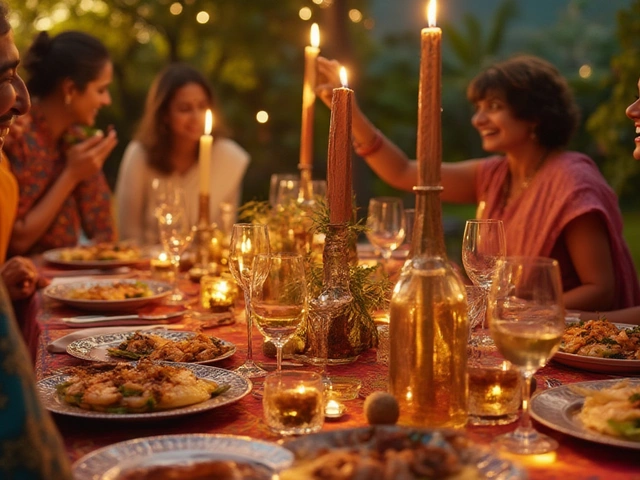
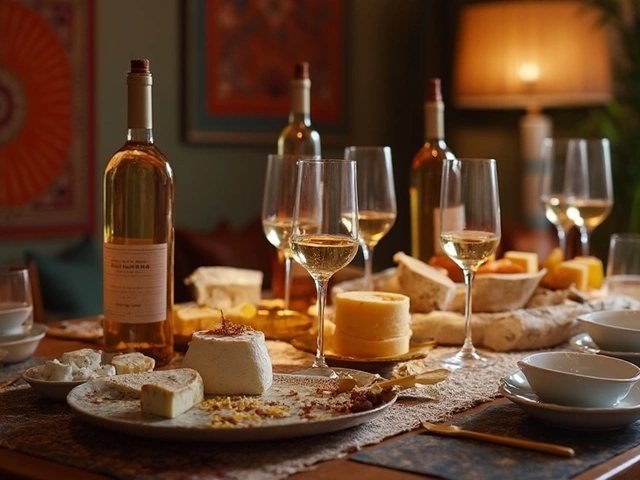
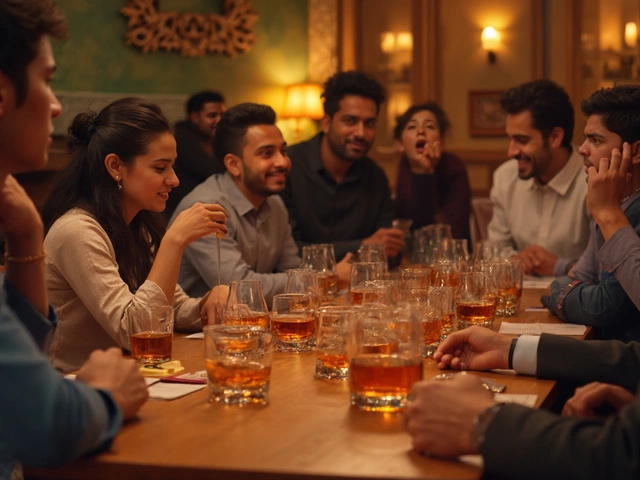
Categories